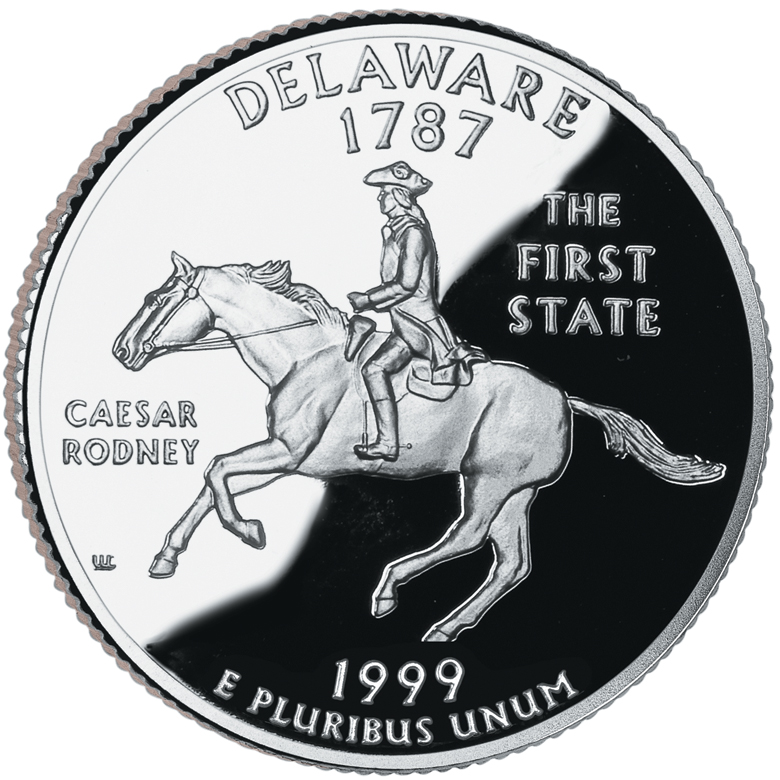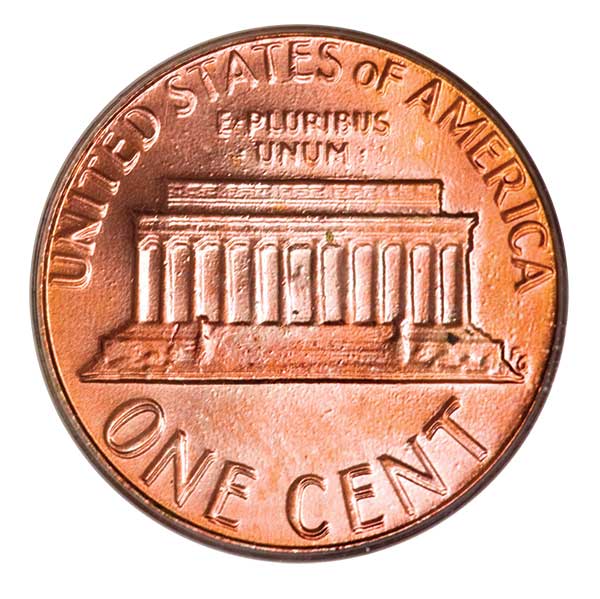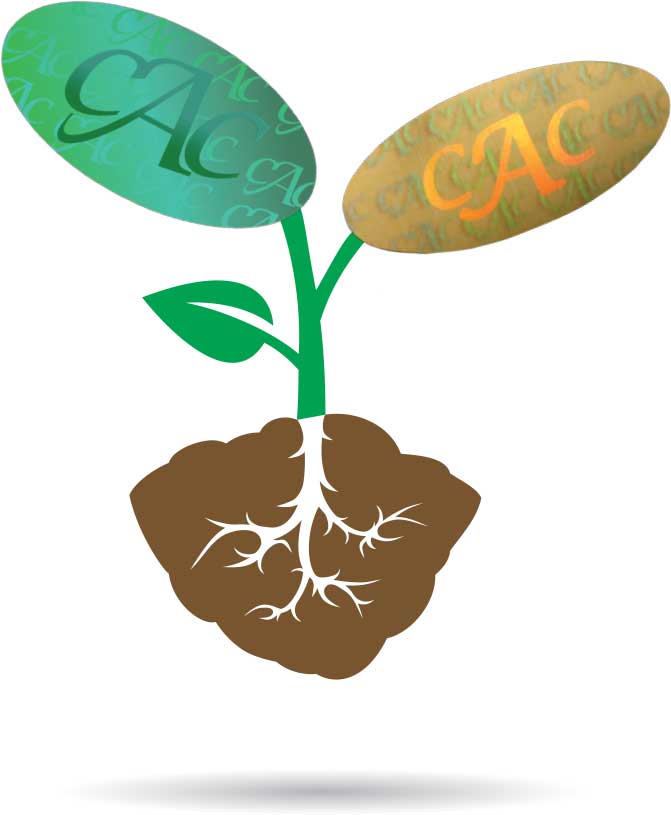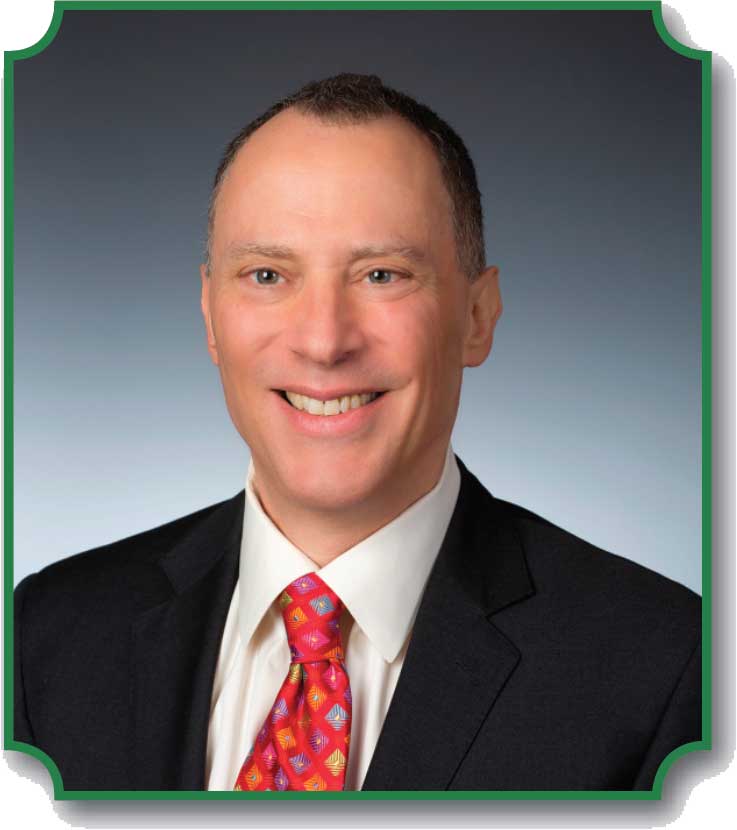Happy Birthday! The 50 State Quarters Turn 20
Can you believe it’s already been 20 years ago since the first 50 State Quarters were released? I
Can you believe it’s already been 20 years ago since the first 50 State Quarters were released? It seems like only yesterday that I found my first state quarters in pocket change. My, how time flies. And, speaking of flies, even Kermit The Frog of Muppets fame served as the official United States Mint “spokesfrog,” comically cruising across the Delaware River in a lighthearted promotional television ad promoting the new quarters. 50 State Quarters program hysteria lured me back to my earlier adolescent-era love of coin collecting in 1999 when I was at the edge of 18, just as my attention drifted toward college and getting busy with “adulting.”
And it wasn’t just I who went gaga over the new quarters. It was virtually everyone. It was a sociocultural phenomenon, with new quarter reveals making national news headlines as each new design hit the street. Even late-night talk show host Conan O’ Brien got in on the fun with his long-running “New State Quarters” skit in which he “pulled a few strings” to unveil upcoming designs – all comical parodies of state quarter themes. The (real) 50 State Quarters program unleashed a flurry of fresh designs on the reverse of the quarter, which on its obverse features John Flanagan’s 1932 portrait of George Washington with modifications by engraver and designer William Cousins.
Five new reverse designs were released each year – once about every 10 weeks – honoring people, places, and things iconic to each of the 50 states. Insomuch, the coins were heralded by parents and teachers for their educational merit. As the quarters were issued in the order that each state joined the Union, Americans enjoyed an instantaneous mass lesson with learning that it was in 1787 when Delaware became the first state to join the Union. We also became familiar with Founding Father Caesar Rodney, the brave man who rode 70 miles by horseback from Dover to Philadelphia during a stormy night in early July 1776 to break a tied decision in the Continental Congress and swung the vote toward national independence. Delaware, appropriately dubbed “The First State” (it even says so on the coin!), played an important role in the creation of the state quarters.
The state’s former governor and representative, Michael Castle, helped spearhead the biggest thing to happen to numismatics in five decades. “When I learned the quarters would be issued in the order the states were admitted to the Union, I decided it was a very important effort,” Castle chuckled during our 2017 telephone interview. “I think people have enjoyed the coins tremendously. I know many people who collect the 50 State Quarters and put them in cardboard holders, and I’ve done the same.”
Like Castle, many folks enjoyed collecting the 50 State Quarters during their run from 1999 through 2008. In fact, according to a 2008 United States Mint press release, government officials estimated a whopping 147 million people collected the 50 State Quarters, a figure representing approximately 48% of the estimated 304 million people living in the US then. The hype over the state quarters has long since simmered down, but the historic commemorative program marks one of the most important periods in the hobby since at least the late 1950s and early ‘60s, when widespread speculation over contemporary coins such as the 1950-D nickel, 1955 doubled die cent, and rolls of uncirculated coins turned millions of Americans on to coin collecting.
Mint Director Recalls The Making Of The 50 State Quarters
Philip Diehl, who served as the 35th director of the United States Mint from 1994 through 2000, says it was wonderful navigating the rough political currents on Capital Hill with Michael Castle. “During our first meeting, I knew we had the partner we needed in Congress,” recalls Diehl, who now serves as president of US Money Reserve and a member of the boards of the Industry Council for Tangible Assets (ICTA) and the Anti-Counterfeiting Education Foundation. “I told Mike we intended to issue the quarters in the order the states ratified the Constitution. Since Delaware was the first state to ratify and Mike represented Delaware, I knew he’d be interested.”
Diehl says he and Castle knew the quarter program was going to be a phenomenal numismatic success. “I worked with a young economist at the Mint, Garren Zuck, to develop several models to estimate the profit (seigniorage) potential of the program. The models were based on the Canadian provincial and the U.S. Bicentennial quarter programs,” he recalls. “Our demand forecasts produced profit estimates ranging between $2.6 billion and $3.8 billion, much higher than we expected. We decided the estimates were credible, but I knew Treasury wouldn’t agree; so, we went with the lower number, which turned out to be spot-on.” He adds, “the truth is the program would have done better except for Treasury’s and the Federal Reserve’s lack of enthusiasm for it.”
The program was exciting for a number of reasons. “First, it was a huge success right out of the gate, proving that we knew what we were doing,” Diehl comments. “Our market research convinced us the program would be a big hit with pre-teens, their parents, and their grandparents. What surprised us was the enthusiasm teenagers had for the quarters. The program had strong support across many demographics.”
And while it’s hard to imagine the numismatic landscape today without the state quarters, Diehl says it would’ve been virtually impossible to undertake a massive program like the 50 State Quarters if not for “retooling and reinvention of the Mint” prior to the first state quarter rolling off the press. “Five years earlier, we lacked the die-making, material-handling, demand forecasting, market research, customer service, financial management, capital planning, procurement, and online sales capabilities that were crucial to making the program a reality. We had to pass five bills through Congress in order to lay the foundation,” he explains. “The quarters were the proverbial tip of the iceberg, resting on five years of work that lay hidden below the surface.”
Diehl says the state quarters helped grow profits at the US Mint from $700 million to $2.6 billion a year, in six years. “If we had been a private company, we would have gone public, and every Mint employee would have walked away rich. But they did it to prove a point. That’s the real legacy we left behind–more so, even, than the quarters.”
Monster profits were realized with awesome marketing, and I, a former marketing writer and lifelong fan of the Muppets, had to ask Diehl this burning question: how did Kermit become involved in pitching the 50 State Quarters? “There’s an interesting story behind us hiring Kermit,” Diehl recalls. “Our director of marketing who was very creative, David Pickens, came to me one day after talking to the Jim Henson Company. They had offered to create a Muppets character to be the spokesperson for the program. I said, ‘No thanks. I know who I want.’ So, I called the Henson people and told them Kermit’s nation was calling him to duty.” Apparently, Diehl’s request was treading on new territory for the Muppets team. “They had to think about it – none of their characters had done advertising before. But a few days later Kermit agreed to be our ‘croaksperson,’” Diehl says his office wall is adorned with vanity shots of him posing with various heads of state. “Among them is a headshot of me and Kermit in ‘Men in Black’ sunglasses. I’ve admired the work of the Henson folks for many years. Kermit was perfect for this job.”
The Evolution Of The 50 State Quarters In The Marketplace
All these years later, the 50 State Quarters still dominate the marketplace. Ads for the coins frequently appear in numismatic and general periodicals alike. Collectors continue popping 50 State Quarters into colorful cardboard maps, coin folders, and deluxe albums. And newbies pluck worn examples from Philadelphia and Denver from circulation with greater ease these days than years ago, back when it seemed like everyone was hunting for the same state quarters. Meanwhile, many advanced collectors assemble registry sets of 50 State Quarters, aiming for MS70 examples of both the “P” and “D” business strikes and PR70 specimens of the copper-nickel clad and 90% silver proofs from the “S” Mint of San Francisco.
And the exceptional popularity of the 50 State Quarters didn’t just help create scores of new coin collectors, but they also minted countless new coin dealers who built or expanded their businesses with the white-hot coins. “At the height of the state quarter market I was selling 600,000 pieces of each “P” and “D” mint,” says Stephen Gonzales, owner of SAG Enterprises. “Grandparents were flocking in to put sets together for their grandkids and parents the same. We could not keep state quarter folders and maps in stock long enough! People flocked into shops that never even noticed the difference in coins to start up a collection,” Gonzalez gleefully recalls. “No sooner was a state quarter was released people would be coming in or calling wondering if the next state was out. It was a definite boost to our hobby.”
The Massachusetts coin dealer coordinated shipments with Brinks to deliver tens of thousands of quarters from the Federal Reserve Bank to various distribution points and in trading his P-mint quarters with a coin dealer out west for his D mints. “Today, you can buy most [state quarters] for just a small premium over face value,” he notes. “The 1999 9-piece 90% silver proof set that peaked at $400 in the early 2000s can be bought for the bargain basement price of $75,” he notes. But prices didn’t stay low for very long after their run ended in 2008 and the buzz petered out. “When the price of silver shot up to $50 an ounce in 2011, a lot of the common silver proof sets containing the state quarters were broken apart and melted down.”
New York dealer Matt Draiss agrees: prices for the 50 State Quarters are certainly down these days from levels realized in years past. “The market conditions for the 50 State Quarters translates into a promoter’s paradise,” he says. “You see the state quarter series it at all-time market lows. You can pick up BU rolls for 10% over face value, every single clad proof quarter set for a few dollars (with the exception of the 2008), and proof silver state quarter sets for just over melt,” explains the dealer whose namesake business, Matt Draiss Rare Coins, handles a wide variety of numismatic material. “This is an opportunity for the big promotional firms to put some pizzazz back into the program.”
Promoters made big money selling state quarters through mail-order outlets and the internet. But it was TV that proved the most fertile grounds for big-time promoters hoping to rake in the bucks. “The concept of selling coins on television was one of the best things to ever happen to this industry for both the collector and the dealer,” says Draiss. “The TV [numismatic sales circuit] was pioneered greatly by my late friend and mentor Lewis Revels of Chattanooga Coin and many of my other friends over the past 30-plus years. But that was greatly fueled by the advent of the state quarter.”
Many of the state quarter sold via TV ads were altered in some way, with these novelty pieces often sold as jewelry or colorized works of art. But Draiss says plated quarters are the most popular pieces. “The gold-plated state quarter set is absolutely magnificent even to this day. It was utter brilliance to plate them, paint them, and mass market them,” he asserts. “I strongly believe that with the 20th-year milestone, we should be not only promoting gold-plated sets, but try more exotic runs like palladium plated quarters – I hear palladium is hot! For less than $100, a gold-plated state quarter set that is in brilliant uncirculated condition sets the bar extraordinarily high for promotional opportunities.”
Meanwhile, advanced collectors who want something beyond the ordinary P-D-S issues can turn to state quarter varieties and errors. These range from the 1999 “Spitting Horse” Delaware quarter to the 2008 “Extra Cactus Leaves” Arizona quarter. But the most notable varieties remain 2004 Wisconsin “Extra Leaf” quarters and 2005 Minnesota doubled die and “Extra Tree” varieties, both of which made headlines upon their discoveries. With prices down, now might be a good time to pick up such state quarter oddities. “Error and variety coins get dragged down in price with the fall of the overall series,” says Draiss, adding for dealers, “I highly encourage picking up state quarter errors and varieties to market for the 20th anniversary.”
Looking Ahead: A Bright Future for State Quarters
As I pore through the quarters in my change jar, I can’t help feeling a little old. Some of those early 50 State Quarters are looking pretty worn these days. Yet even Caesar Rodney’s horse on the Delaware quarter isn’t looking any longer in the tooth than he did 20 years ago. The designs remain fresh and the state quarters continue inspiring countless children and adults to collect coins. The 50 State Quarters, like other US coins, will live on well beyond any of us. And they may well one day be considered “timeless” by some numismatic critics, if not already.
There’s no overstating just how important the 50 State Quarters program was – and remains – in bringing new life to the coin hobby. “The program hands down created more collectors than anything else ever done in history,” says 22-year-old Draiss. “I believe the Mint needs to up the level of promotions and advertising on social media where young eyes are. I speak from experience that college and high school can be expensive, but the state quarter program is an affordable alternative.” He says a complete brilliant uncirculated collection representing Philly and Denver coins can be assembled for $50 while a full set of 200 proof and BU coins is obtainable for only a few hundred dollars. “I can’t stress enough that the upside potential is enormous,” he adds. “This is a program that just needs a little life breathed into it again. The opportunity is huge.”
And speaking of opportunities, the US Mint continues its efforts to recapture the success of the state quarters with new coin programs, such as the Innovation $1 Coin series due out this year. Yet even with the creation of at least a half-dozen other significant circulating commemorative initiatives since 1999, none have caught on with coin collectors or the general public like the 50 State Quarters program did. Says Diehl, “the [50 State Quarters] program accomplished its mission: introduce a new generation of Americans to the pleasure of collecting by putting interesting coins into pocket change.”
In so many ways the state quarters set a very high bar of expectation and success for all coin programs that came after. Yet Diehl posits the state quarter program’s incredible success didn’t come with mere guesswork or luck – it took research and knowing the audience. “We knew from looking at the life cycle of coin collectors in the 1990s that the seed is planted in the early teenage years. Then life intervenes: sports, dating, college, work, families. The collecting urge typically returns in your 40s, and some of those teenagers from 20 years ago are approaching 40 now,” he says. “It’s early, but the coin business needs to be thinking about how it will draw those folks back to the hobby. We laid the groundwork for it.”

Download the Greysheet app for access to pricing, news, events and your subscriptions.
Subscribe Now.
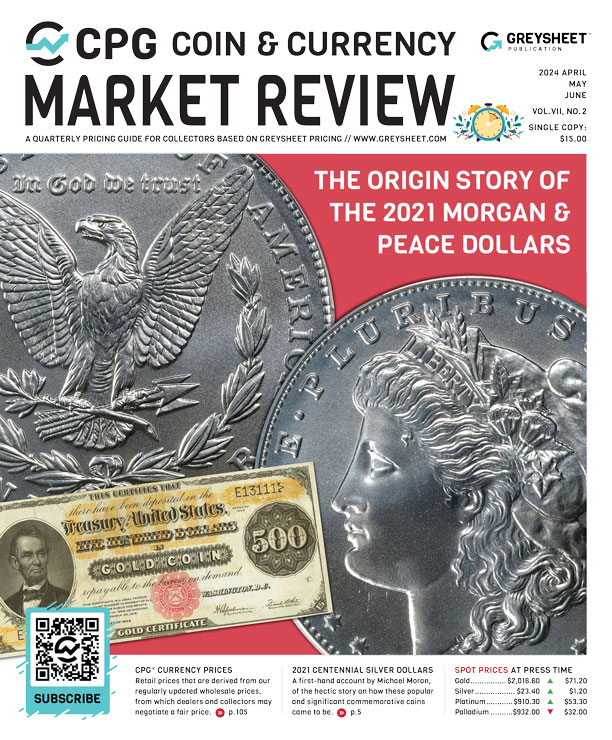
Subscribe to CPG© Coin & Currency Market Review for the industry's most respected pricing and to read more articles just like this.


